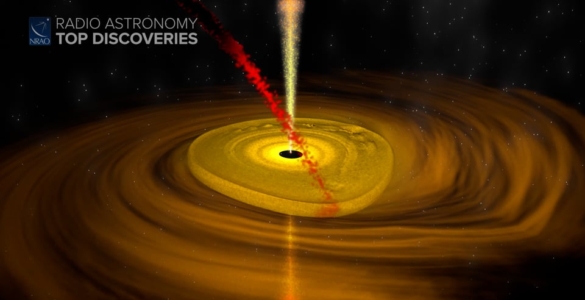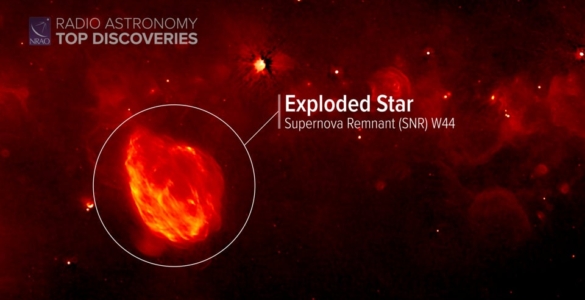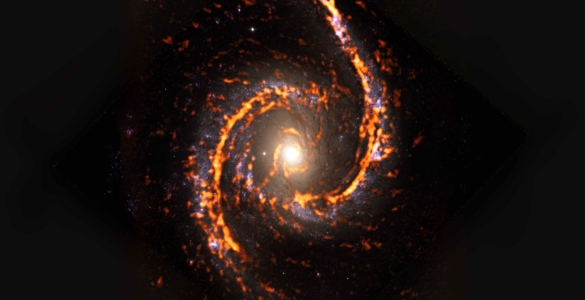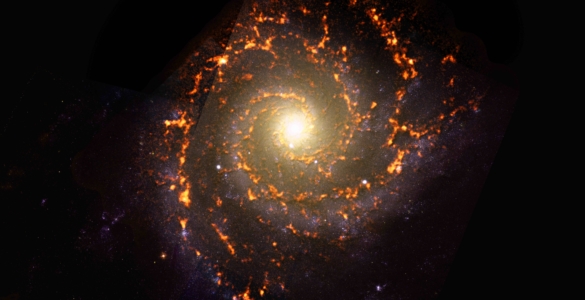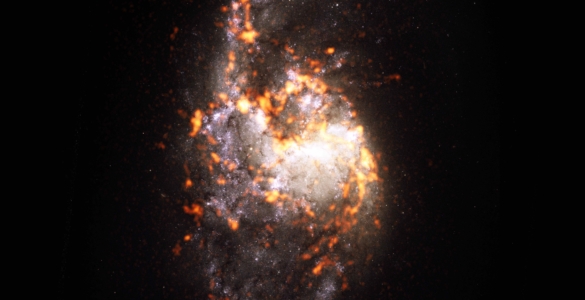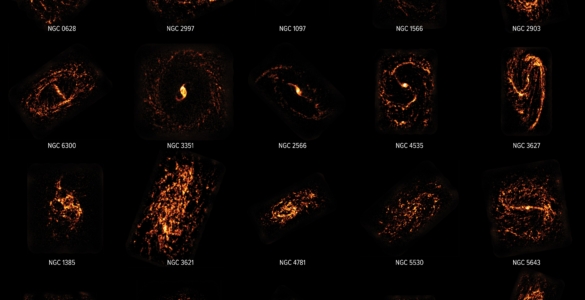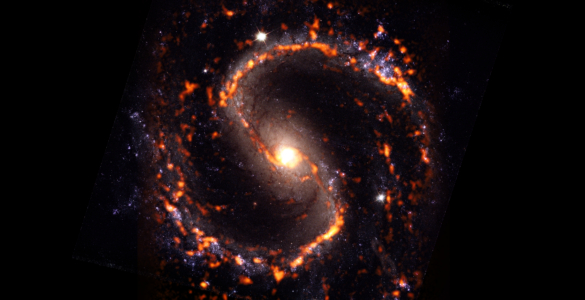Stars Forming in our Galaxy’s Heart
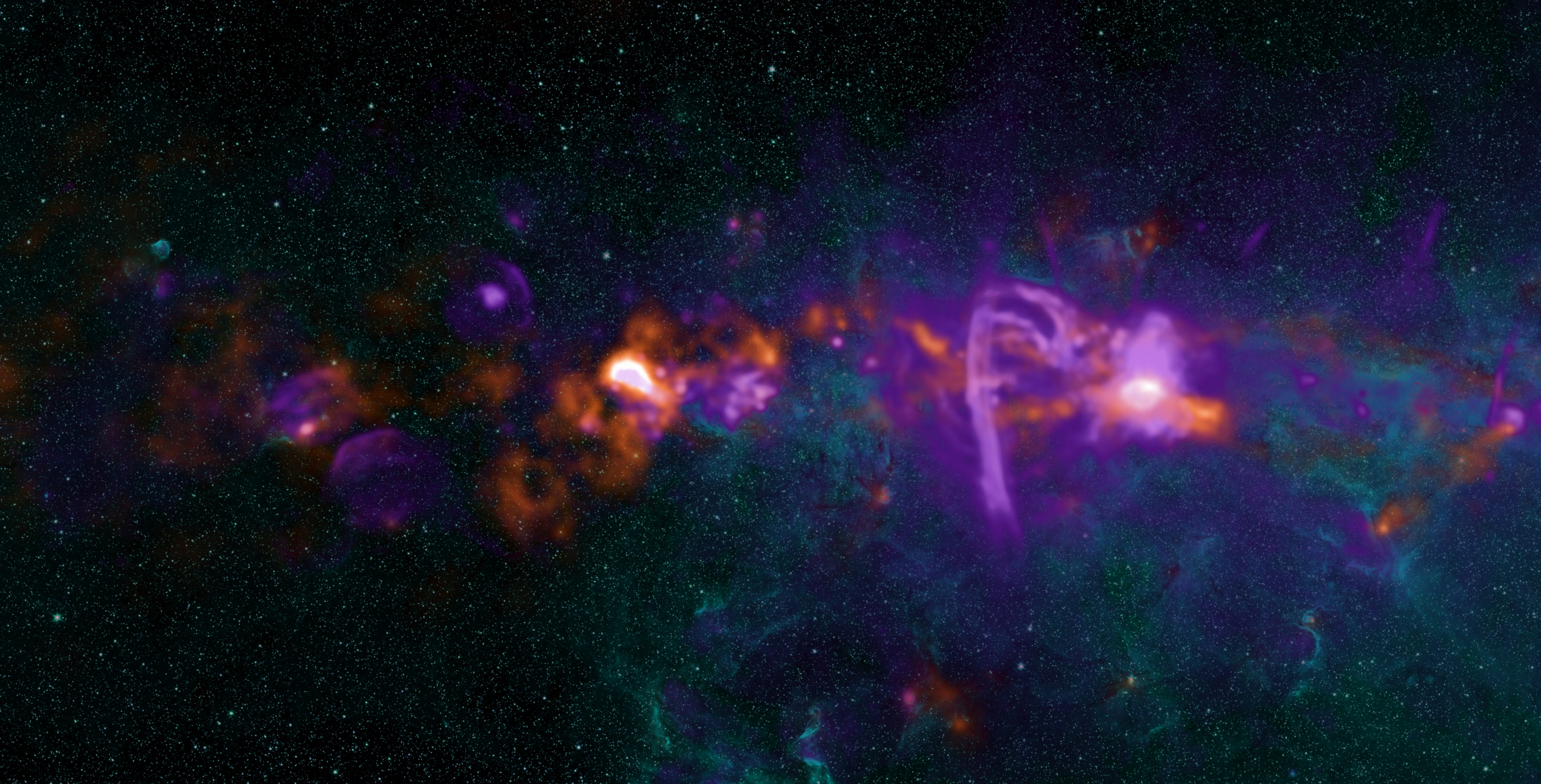
The Galactic Center and the surrounding Central Molecular Zone make up the most active star formation region in the Milky Way. Regions of molecular hydrogen (purple), seen by the Very Large Array (VLA), are illuminated by hot, massive stars, supernova remnants, and synchrotron emission. The Caltech Submillimeter Observatory observed cold (20-30 K) dust associated with molecular gas (orange). Some of this material will form stars within in the next few million years; the remainder will be blown away. The diffuse cyan and colored star images are from the Spitzer Space Observatory’s Infrared Array Camera. The cyan is primarily emission from stars, the point sources, and from polycyclic aromatic hydrocarbons (PAHs), the diffuse component.
Credit: NRAO/AUI/NSF; Adam Ginsburg and John Bally (Univ of Colorado - Boulder), Farhad Yusef-Zadeh (Northwestern), Bolocam Galactic Plane Survey team; GLIMPSE II team
| Technical Details | |
|---|---|
| Telescope | Spitzer Space Observatory's Infrared Array Camera; VLA; Caltech Submillimeter Observatory |
| Band | B; L; - |
| Date | Thu Mar 16 11:58:44 EDT 2017; -; - |
| Center | RA: 17:45:40.04, Dec: -29:00:28.17 |
Part of Collections:
Image of the Week
Download Image download
Have you reviewed our Media Use Policy?
Yes, continue arrow_circle_right
| Original TIFF | download | ||
| Hi-Res Full-Size | 3000 x 1527 | 2 MB | download |
| Screensize File | 1024 x 521 | download |






